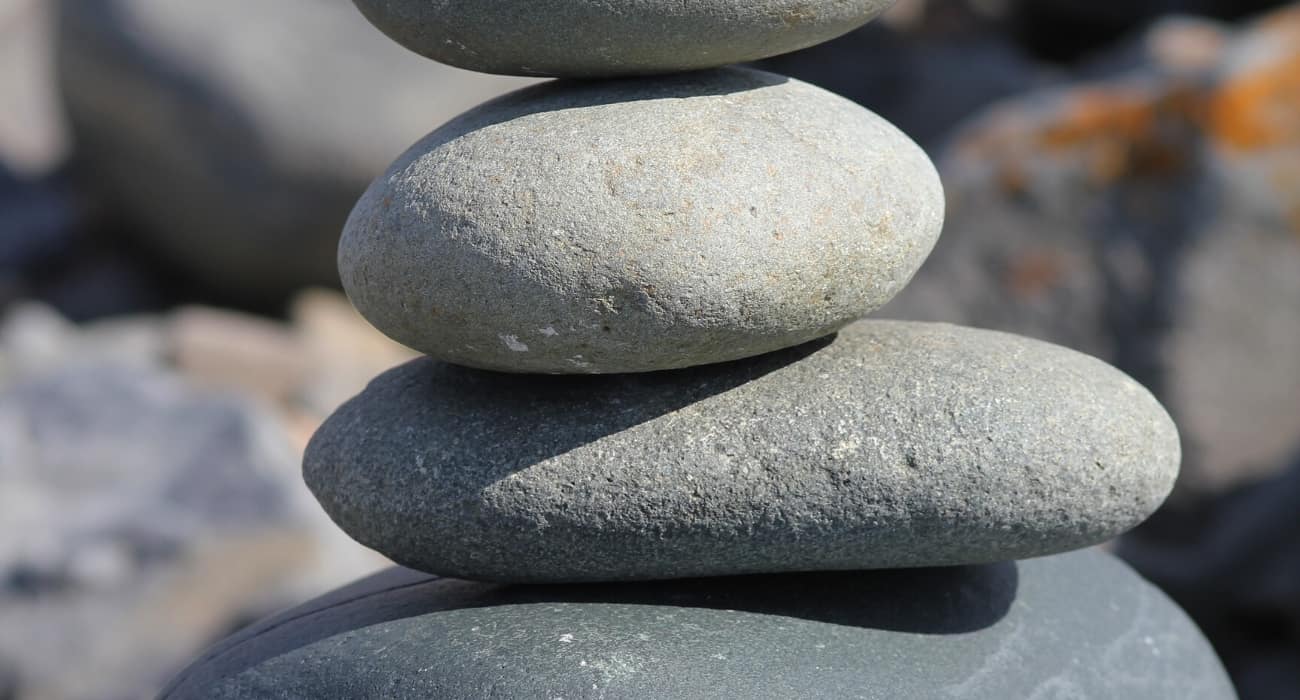Yes, you can glue aquarium rocks together using aquarium-safe adhesives. Make sure the glue is non-toxic and waterproof.
Creating a stable and visually appealing aquascape often involves securing rocks in place. This prevents them from shifting, which can disturb the tank’s balance and harm aquatic life. Aquarium-safe adhesives like silicone sealants or epoxy putty are ideal for this purpose.
These products ensure that your rocks remain securely bonded without releasing harmful chemicals into the water. Always verify the adhesive’s safety by checking product labels or consulting with aquarium experts. Properly glued rocks can enhance the aesthetic appeal of your aquarium, creating a more natural and engaging environment for both fish and plants.
Credit: www.reef2reef.com
The Essentials Of Aquarium Design
Creating a beautiful aquarium involves more than just adding water and fish. It’s about crafting a serene underwater world. An essential part of this is knowing how to glue rocks together. This helps in creating a stable and aesthetically pleasing environment.
Choosing The Right Rocks
Selecting the right rocks is vital for your aquarium. Some rocks can alter the water’s pH level. This can harm your fish. It’s best to choose aquarium-safe rocks.
- Slate: Slate is popular for its flat surfaces.
- Granite: Granite is durable and does not affect water chemistry.
- Lava Rock: Lava rock is lightweight and porous.
Ensure the rocks are clean before using them. Rinse them thoroughly to remove dust and debris.
Importance Of Stability In Aquascapes
Stability is crucial in aquascapes. Rocks that are not secure can fall and harm your fish. Gluing the rocks together ensures they stay in place.
- Safety: Stable rocks prevent accidents and injuries.
- Appearance: A stable arrangement looks more natural.
- Maintenance: It makes cleaning the tank easier.
Use aquarium-safe glue to bond the rocks. Avoid using regular glue, as it can be toxic. Apply a small amount of glue to the contact points. Press the rocks together and hold them for a few seconds.

Credit: petfishscout.com
Understanding Aquarium Adhesives
When setting up an aquarium, securing rocks can be essential. Gluing rocks together provides stability and prevents accidents. Choosing the right adhesive ensures your fish stay safe and the tank looks great.
Types Of Glues Suitable For Aquarium Use
There are several types of glues that work well in aquariums. Each type has its own benefits and uses. Here are the most common types:
- Cyanoacrylate Super Glue: This glue is fish-safe and bonds quickly. It’s perfect for small rocks and decorations.
- Silicone Sealant: Aquarium-safe silicone is great for larger projects. It creates strong, flexible bonds.
- Epoxy Putty: This putty is moldable and works underwater. It’s ideal for large rocks and complex shapes.
Safety Concerns With Chemical Adhesives
Using the wrong glue can harm your fish. It’s crucial to choose adhesives that are non-toxic and safe for aquatic life. Here are some safety tips:
| Glue Type | Safety Tips |
|---|---|
| Cyanoacrylate Super Glue | Ensure it’s pure and doesn’t contain additives. |
| Silicone Sealant | Use only aquarium-safe silicone. Avoid household variants. |
| Epoxy Putty | Look for products labeled safe for aquariums. |
Always read the label before using any adhesive. Ensure it’s marked as safe for aquariums. This protects your fish and plants from harm.
The Art Of Gluing Aquarium Rocks
Gluing aquarium rocks can transform your tank. It helps create stunning aquascapes. This technique also ensures stability. Learn the art of gluing rocks for a beautiful, safe aquarium.
Preparing The Rocks For Gluing
Proper preparation is crucial. Follow these steps to prepare your rocks:
- Clean the Rocks: Rinse rocks thoroughly with water. Remove any dirt or debris.
- Dry the Rocks: Make sure rocks are completely dry. Use a clean towel to speed up the process.
- Sand the Surfaces: Lightly sand the surfaces to be glued. This helps the glue adhere better.
- Arrange the Rocks: Plan your rock layout. Ensure stability and aesthetic appeal.
Step-by-step Gluing Process
Now, let’s glue the rocks together. Follow these steps:
- Choose the Right Glue: Use aquarium-safe glue. Cyanoacrylate gel is a good choice.
- Apply Glue: Squeeze a small amount of glue on one rock. Focus on the contact points.
- Press Rocks Together: Hold the rocks firmly for a few minutes. This ensures a strong bond.
- Allow to Cure: Let the glue cure for at least 24 hours. This ensures maximum strength.
- Test the Bond: Gently test the glued rocks. Ensure they are securely attached.
By following these steps, you can master the art of gluing aquarium rocks. Enjoy creating your unique aquascape!
Diy Solutions For Aquarists
Many aquarists prefer to create their own aquarium setups. This DIY approach offers a unique touch to their aquariums. One common question is, “Can you glue aquarium rocks together?” Yes, you can! Below are some DIY solutions for aquarists.
Homemade Glue Recipes
Some prefer to make their own glue for aquarium rocks. Here are a few recipes:
- Gelatin-Based Glue: Mix gelatin with water until it thickens. Let it cool before applying.
- Flour and Water Paste: Combine flour and water to create a thick paste. This is non-toxic and safe for fish.
Natural Alternatives To Chemical Glues
Some aquarists seek natural alternatives to chemical glues. Here are a few options:
| Material | Usage |
|---|---|
| Thread | Wrap rocks together tightly with thread. |
| Zip Ties | Secure rocks using small zip ties. Cut off excess. |
These natural methods are safe and effective. They avoid harmful chemicals in your tank.
Commercial Glues For Aquarium Use
Many aquarium enthusiasts often ask, “Can you glue aquarium rocks together?” The answer is yes! Using the right glue ensures the safety of your aquatic pets and keeps your underwater landscape intact. This section delves into commercial glues specifically designed for aquarium use, offering insights into top brands and what to look for in an aquarium glue.
Top Brands Reviewed
When choosing a glue for your aquarium rocks, consider these top brands:
| Brand | Key Features |
|---|---|
| Seachem Reef Glue | Fast-setting, non-toxic, works underwater |
| Loctite Super Glue Gel | Water-resistant, clear drying, easy to use |
| Gorilla Super Glue Gel | Strong bond, impact-resistant, no-run formula |
What To Look For In Aquarium Glue
Choosing the right aquarium glue is crucial. Here are some factors to consider:
- Non-toxic: Ensure the glue is safe for fish and plants.
- Waterproof: The glue must withstand constant water exposure.
- Quick-setting: A fast-setting glue saves time and hassle.
- Clear drying: Clear drying glue keeps the aesthetic intact.
Using the right glue ensures the safety of your aquarium. It also keeps your underwater landscape beautiful and secure.

Credit: www.reddit.com
Troubleshooting Common Issues
Gluing aquarium rocks together can be tricky. Sometimes, you may face issues. Let’s troubleshoot these common problems.
Dealing With Glue Failures
Glue failures can occur due to various reasons. Here are some common causes:
- Dirty surfaces: Always clean rocks before gluing.
- Incorrect glue type: Use aquarium-safe glue.
- Improper curing: Let glue cure fully before submerging.
Ensure surfaces are dry before applying glue. Wet rocks weaken the bond. If glue still fails, recheck the type of glue used. Not all glues work underwater.
Tips For Stronger Bonds
To achieve strong bonds, follow these tips:
- Roughen the surface: Use sandpaper to roughen rock surfaces. This helps the glue adhere better.
- Use clamps: Hold the rocks together with clamps while the glue cures.
- Apply enough glue: Ensure you use a generous amount. Thin layers may not hold well.
For best results, let the rocks cure for at least 24 hours. Patience ensures a stronger bond.
Innovative Aquascaping Techniques
Creating a beautiful aquarium involves more than just adding fish and plants. Innovative aquascaping techniques can transform an ordinary tank into a stunning underwater landscape. One exciting method is gluing rocks together. This technique allows for endless creative possibilities.
Integrating Glued Rocks Into Designs
Integrating glued rocks into your aquarium design can create natural-looking structures. You can use them to build caves, arches, and even walls. Glued rocks provide stability and prevent unwanted movement. This makes your underwater scenery more permanent and visually appealing.
Consider the following tips for integrating glued rocks into your design:
- Choose rocks that complement each other in size and color.
- Use aquarium-safe glue to avoid harming your fish.
- Test the stability of the structure before placing it in the tank.
Creating Features With Glued Rocks
Creating unique features with glued rocks can make your aquarium stand out. You can design intricate rock formations that serve as focal points. These features provide hiding spots and play areas for your fish.
Here are some ideas for creating features with glued rocks:
- Build a rock cave to give fish a place to hide.
- Create a rock arch to add visual interest.
- Design a tiered rock wall to mimic natural landscapes.
| Feature | Description | Benefits |
|---|---|---|
| Rock Cave | A small, enclosed area made of rocks. | Provides shelter and security for fish. |
| Rock Arch | A curved structure connecting two points. | Adds aesthetic appeal and swim-through space. |
| Tiered Rock Wall | A layered rock formation. | Mimics natural environments and offers climbing surfaces. |
Using these techniques, you can create a stunning aquarium. Innovative aquascaping with glued rocks opens up endless design possibilities.
Maintaining Your Aquascape
Maintaining your aquascape is key to a thriving aquarium. Gluing rocks together makes your design stable and beautiful. But care and attention are essential for long-lasting results.
Long-term Care For Glued Rocks
Long-term care for glued rocks involves regular inspection. Check for any loose rocks monthly. If any rocks move, reapply glue immediately. This ensures the structure stays intact.
Use aquarium-safe glue. It will not harm your fish or plants. Always follow the manufacturer’s instructions when using glue.
Clean your rocks gently. Use a soft brush to remove algae. Avoid using harsh chemicals. They can weaken the glue and harm your aquarium.
Keep your water parameters stable. Proper water conditions help the glue last longer. Monitor pH, temperature, and hardness regularly. This will help keep your rocks securely glued.
When To Redo Your Aquascape
Redo your aquascape if you notice significant changes. Large cracks in the glue or unstable rocks mean it’s time to redo.
Check for excessive algae growth. If algae cover your rocks, it may be time to start fresh. Scrubbing algae can weaken the glue over time.
Observe your fish’s behavior. If they seem stressed or hide more, consider redoing your aquascape. A new layout can improve their environment.
Plan for a redo every few years. This keeps your aquarium healthy and visually appealing. A fresh design can breathe new life into your aquascape.
Conclusion
Gluing aquarium rocks together can enhance your tank’s aesthetics and stability. Always use non-toxic, aquarium-safe glue. Follow proper procedures to ensure the safety of your aquatic life. Experiment with different designs to create a unique underwater landscape. Enjoy your beautifully crafted aquarium and the vibrant life it supports.
